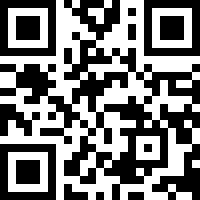Counterfeit drugs entering the supply chain is a growing problem around the world. Consumer and patient safety are crucially important within the healthcare and pharmaceutical industries, as well as, the eroding bottom lines of most pharmaceutical companies due to counterfeit medications infiltrating the supply chain. This not only leads to the loss of billions of dollars, but also increases health risks and recalls— tarnishing the brand image of the already struggling pharmaceutical industry.
Vigorous action is being mandated by local, State, and Federal governments that requires the implementation of track-and trace solutions. Track and Trace (T&T) is a new solution that can help pharmaceutical companies effectively manage their supply chain and mitigate the risks associated with counterfeit drugs.
What is Track and Trace?
Track & Trace (T&T) is a mass serialization solution that prevents counterfeiting by printing a unique identifying code on each product. Robust T&T regulations will undoubtedly aid in the tracking of drugs throughout the entire supply chain, allowing purchasers to identify authentic products with clear traceability and, conversely, detect illegitimate drugs and counterfeit products.
Serialized products must be backed up by a variety of other processes and data points derived from track and trace. In the United States, those additional data points are provided in 3T data (transaction history, transaction statement, and transaction information).
T&T will reduce manufacturers’ vulnerability to counterfeiting and diversion, and will thus improve profitability through efficient recall management, reverse logistics, chargeback resolution and proper planning. This can help pharmaceutical companies enhance their top and bottom lines.
Benefits of Track and Trace Systems
Track and trace systems, in any stage, offer significant benefits in healthcare:
• It aids in ensuring that only legal medical products circulate in the supply chain;
• It ensures patient safety by lowering the hazards associated with SSFFC medical goods, such as intoxication, adverse effects, increased hospitalization days, lack of response to treatment, the need for alternative treatments, and even death;
• It prevents stolen and smuggled goods from entering the legitimate supply chain and being circulated;
• It prohibits the distribution and/or dispensing of expired, restricted, or recalled goods;
• It helps in the delivery of free medical product samples to their intended users;
• It encourages market recalls that are efficient, quick, and safe;
• It enables the collection of pharmacoepidemiological data and development of specific strategies based on such information;
• It promotes effective supply management at all levels of the healthcare system;
• It helps reduce healthcare spending stemming from inappropriate or unnecessary procedures such as the procurement of SSFFC medical products and the cost burden placed on the health system as a consequence of their administration.
Track and Trace Technology
From the point of packaging to the pharmacy, track-and-trace products can be used. These technologies aid in determining the current and previous locations (as well as other information) of a unique item. While this technology is not a complete solution, it does help to reduce attempts to disrupt the supply chain. RFID (Radio-frequency identification) and barcodes are two common technology methods for delivering traceability. The tags contain information that has been electronically stored. RFID devices are classified into two types: passive and active. Passive tags collect energy from the interrogating radio waves of a nearby RFID reader, whereas active tags have a local power source (such as a battery) and can operate hundreds of meters away from the RFID reader.
The second advantage is the secure exchange of accurate data between supply chain network users. The cryptographic nature of this builds insecurity into the information exchange. A third example is with a bridge to the Internet of Things and devices like radio-frequency identification( RFID) transmitters. This is a method of securely and digitally capturing digital data encoded in RFID tags or smart labels by a reader using radio waves. Middleware, a service-oriented software layer that allows software developers to interface with heterogeneous devices such as sensors, actuators, and RFID tags, is used to enable RFID.
Now, end-users can validate the authenticity of medicines and other products using cryptographic identity authentication algorithms prior to purchasing or ingesting (as in the case of food or pharmaceuticals) by simply scanning of NFC/QRCode labels using mobile phone.
Takeaway
With global concerns growing about drug diversion, theft, and counterfeit sales, governments and regulators around the world are pushing for new regulations and solutions to address these issues. Pharmaceutical companies should look into implementing a T&T solution to reduce supply chain risks, meet regulatory requirements, and boost their bottom line.
About IDLogiq
IDLogiq is made up of a team of deeply committed, with multidisciplinary professionals, which includes healthcare specialists, DSCSA and supply chain experts, advanced security technologists, and more. The team comes together to create a technological and trusted solution to supply chain. IDLogiq’s core mission of helping enterprises combat against counterfeiting all over the world to resolve $1.8 Trillion and 1 million lives lost per year and counting.
IDLogiq team envisions a world free of counterfeit drugs and a global environment working together to optimize business efficiency, maximize business intelligence via the application of our state-of-the-art IDLogiq technology.


